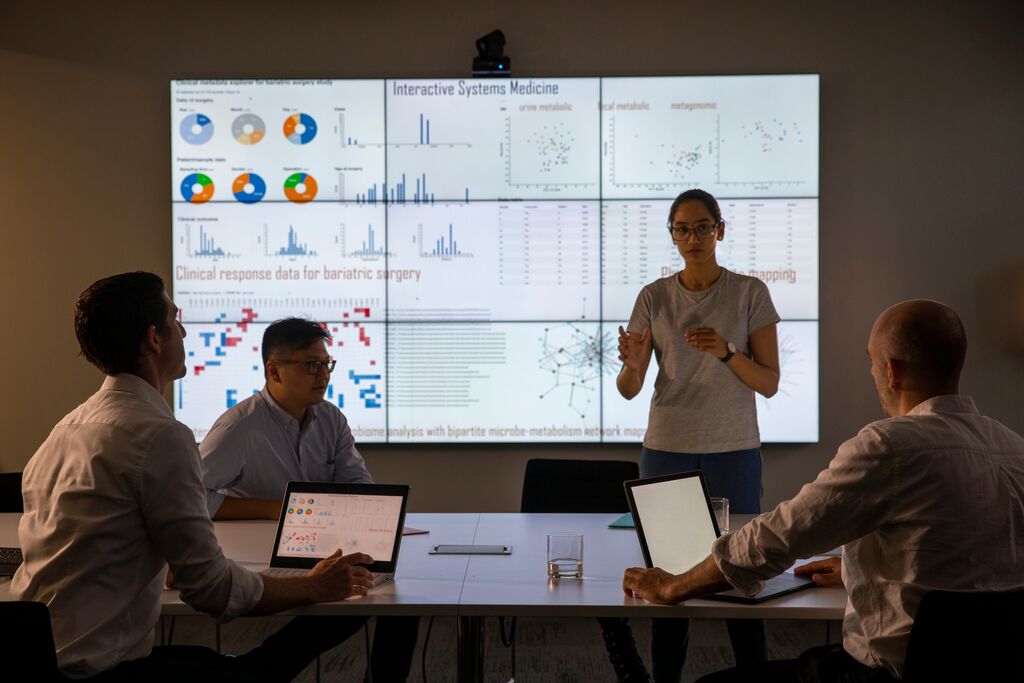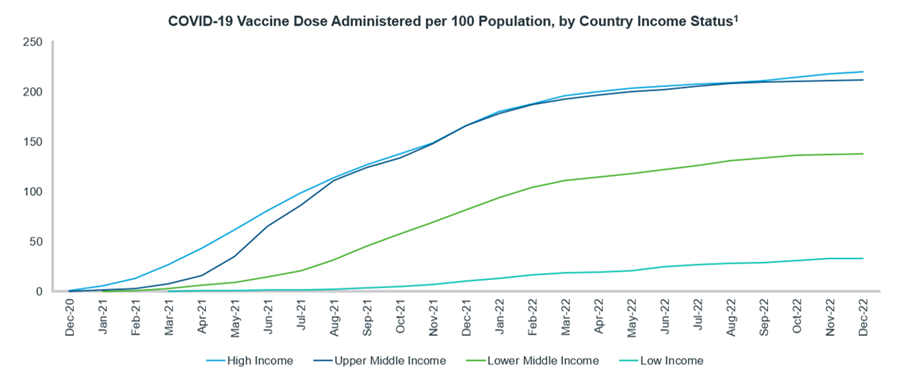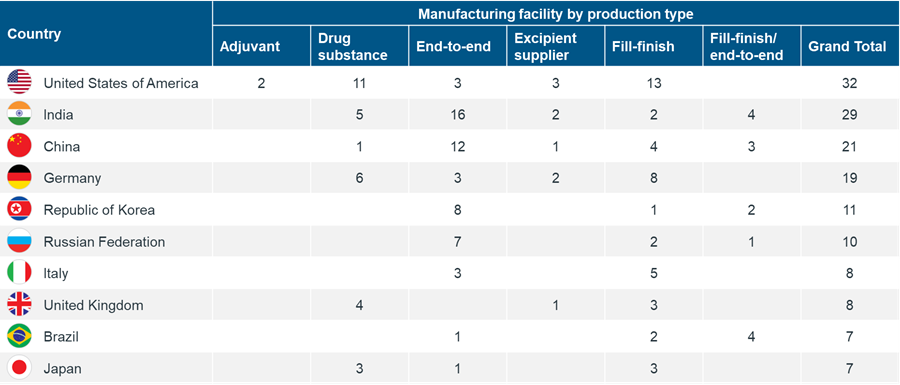





























- Locations
- Asia Pacific
- Domestic Manufacturing in LMICs Part 1: Lessons Learned with COVID-19
The World Health Organization (WHO) has recently declared an end to COVID-19 as a public health emergency1. The global pandemic has claimed 7 million lives, but it was estimated that the death toll is much higher, with at least 20 million lives lost. COVID-19 vaccines were the cornerstone for the pandemic recovery when they were first introduced in 2020, yet less than 70% of the world population has received at least one dose of a COVID-19 vaccine2.
Quoting Tedros Adhanom Ghebreyesus, WHO Director-General: “COVID-19 has laid bare the searing inequalities of our world, with the poorest and most vulnerable communities the hardest hit, and the last to receive access to vaccines and other tools.” In this blog post, we take a closer look at this huge gap of access to COVID-19 vaccines to draw lessons learned and propose a way forward to prepare countries, and the world, for future pandemic response.
Disparities in vaccines administration: The winners and the losers
By the end of 2022, more than 13 billion doses of COVID-19 vaccines have been administered globally with approximately (per 100 population):
- 222 doses in high-income countries (HICs)
- 213 doses in upper-middle income countries (UMICs)
- 139 doses in low-middle income countries (LMICs)
- 35 doses in low-income countries (LICs)2
On average, HICs such as the United Kingdom (UK), the United States (US) and Canada, have secured enough vaccine doses to cover more than 300% of its population compared to only 21% for LICs which are heavily dependent on bilateral donations and COVAX3.
Equity challenges extend beyond supply chain disruption
In September 2021, COVAX announced reduction of their initial targets, from delivering 2 billion doses to 1.425 billion doses of vaccines for the year, and from 1.8 billion doses to 1.2 billion doses for 2022, stating challenges such as prioritization of bilateral deals between manufacturers and purchasing countries, export bans, scale-up difficulties by key vaccine producers, and delays in filing for regulatory approval as the main reasons behind the target revision4.
Countries with purchasing power and production capabilities exert their influence on vaccines distribution and prevent from fair access to other parts of the world. The vaccination rates between HICs and UMICs only began to equalize towards the end of August 2021, almost 9 months after the first dose of vaccines were administered2. Even among HICs, there was a huge gap of doses administered within the first 6 months, with the US and UK administering more than twice the number of doses compared to other HICs2.

Figure 1: COVID-19 Vaccine Dose Administered per 100 Population, by Country Income Status
Even when there was an effort to redistribute unused COVID-19 vaccines from HICs to lower income economies, this has been inefficient as it involves multiple logistics handling and tend to be ad-hoc in nature with short expiry vaccines which incurred high wastage rates and country resources to administer multiple types of vaccines received from these donations.
The way forward
As we reflect on these challenges, there is a clear need for us to diversify and expand vaccines manufacturing capabilities especially in LMICs to improve equitable access to resources and global pandemic response.
Currently, manufacturers supplying vaccines and treatments for COVID-19 are largely concentrated in HICs, India and China. The top 10 countries with the highest number of manufacturers for COVID-19 vaccine and treatment are listed in Table 1 below2.

Table 1: Top 10 Countries with Manufacturing Facilities for COVID-19 Vaccine and Treatment
By bolstering local production capabilities, LMICs can reduce reliance on external suppliers, mitigate risks associated with political decisions in these producing countries and ensure timely access to critical resources for pandemic response.
In subsequent blog posts, we will delve deeper into efforts taken to improve domestic manufacturing capabilities in LMICs, as well as its benefits and guiding principles in the context of pandemic response and recovery. Read Part 2: Building Supply Chain Resilience here.
References
1https://www.who.int/news-room/speeches/item/who-director-general-s-opening-remarks-at-the-media-briefing---5-may-2023
2Mathieu, E., Ritchie, H., Ortiz-Ospina, E. et al. A global database of COVID-19 vaccinations. Nat Hum Behav (2021) Available from https://ourworldindata.org/covid-vaccinations
3https://www.unicef.org/supply/covid-19-market-dashboard
4https://www.unicef.org/press-releases/joint-covax-statement-supply-forecast-2021-and-early-2022

IQVIA Public Health & Government
Working across the health system to address key barriers to deliver high-quality, cost-effective care while improving health outcomes using our data-driven and population-centric solutions.


